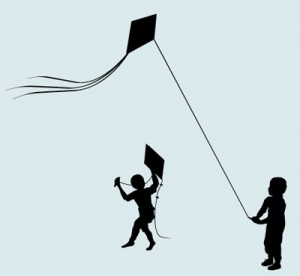November 22nd, 2009 by Frank LaBanca, Ed.D.

from www.babygadget.net
I am a strong advocate for authentic inquiry where we allow students to pursue interesting problems and determine innovative, creative solutions. In order for a student to build a strong repertoire of problem finding and solving skills, they must develop the necessary prerequisite skills and have a positive disposition to learning. I often think back to the expertise literature from the creativity domain. (Below, from LaBanca, 2008):
Experts of a domain structure their knowledge differently from novices (Chase & Simon, 1973; Chi, Glaser, & Rees, 1982; Feldhusen , 2005; Larken, McDermott, Simon, & Simon, 1980; Sternberg, 2001). Expert knowledge is centered on conceptual understanding, with the use of specific domain-based strategies (Driscoll, 2005). Expert problem finding and solving, therefore, is a utilization of pattern recognition based on previous experience and matching those patterns to corresponding aspects of a problem. Novices generally do not possess the same understanding, and, in turn, utilize more general, non-domain specific, problem finding and solving strategies (Driscoll, 2005).
In an instructional setting, some teaching practices lead to the conveying of decontexualized information, whereby students are unable to transfer what they have learned to relevant situations (Brown, Collins, and Duguid, 1989). Students, as novices, have difficulty solving complex, authentic problems because they “tend to memorize rules and algorithms” (Driscoll, 2005, p. 161). Experts would tend to use situational cues to solve problems. Because they have greater domain-specific content knowledge, experts approach finding and solving problems by recognizing and applying previously experienced patterns.
Simply put:
- Experience matters.
- Experience promotes higher levels of creativity.
- Experience makes better problem finders and solvers.

from newenglandsite.com
As a parent, I feel that part of my responsibility is to provide opportunities for my children to have diverse experiences which expose them to authentic problem solving experiences. Today was one of those days. As I was cleaning out the back of my car, I came across several kites. I enjoy flying kites, but have never done this with my children. Spontaneously, I packed them up, took a drive to Seaside Park in Bridgeport (probably the nicest beach on the Connecticut coast), and we set up shop.
Although my younger daughter Maggie (5) was not as impressed, my older daughter Anna (7) really got into it. She was trying to figure out how to get the kite to stay in the air without crashing back to the sand on the beach. Once the thing was about 100 feet in the air, I asked her how she got it so high. She was able to give me a detailed explanation of how it works and some of the tricks that were necessary to work the kite. This was without really any advice from me. She tackled the problem and devised a solution using a trial and error strategy.
I think sometimes in science education, some get stuck in the mess of using only a hypothesis-based problem solving strategy. That’s a shame because there are so many other ways to solve problems. For example (from Wikipedia:)
- Divide and conquer
- Hill-climbing strategy, (also called gradient descent/ascent, difference reduction, greedy algorithm)
- Means-ends analysis
- Trial-and-error
- Brainstorming
- Morphological analysis
- Method of focal objects
- Lateral thinking
- George Pólya‘s techniques in How to Solve It
- Research
- Assumption reversal
- Analogy
- Reduction (complexity)
- Hypothesis testing
- Constraint examination
- Incubation
- Build (or write) one or more abstract models of the problem
- Try to prove that the problem cannot be solved.
- Get help from friends or online problem solving community
- Delegation: delegating the problem to others.
- Root Cause Analysis
- Working Backwards
- Forward-Looking Strategy
- Simplification
- Generalization
- Specialization
- Random Search
- Split-Half Method
- The GROW model
- TRIZ
- Eight Disciplines Problem Solving
- Southbeach Notation
- The WWXXD Method:
Let’s really strategize to provide students with DIVERSE opportunities for problem solving in our classroom. If I can do it unplanned with my children on a sunny, chilly, fall day at a beautiful beach, we can certainly find ways to to it in our classrooms.